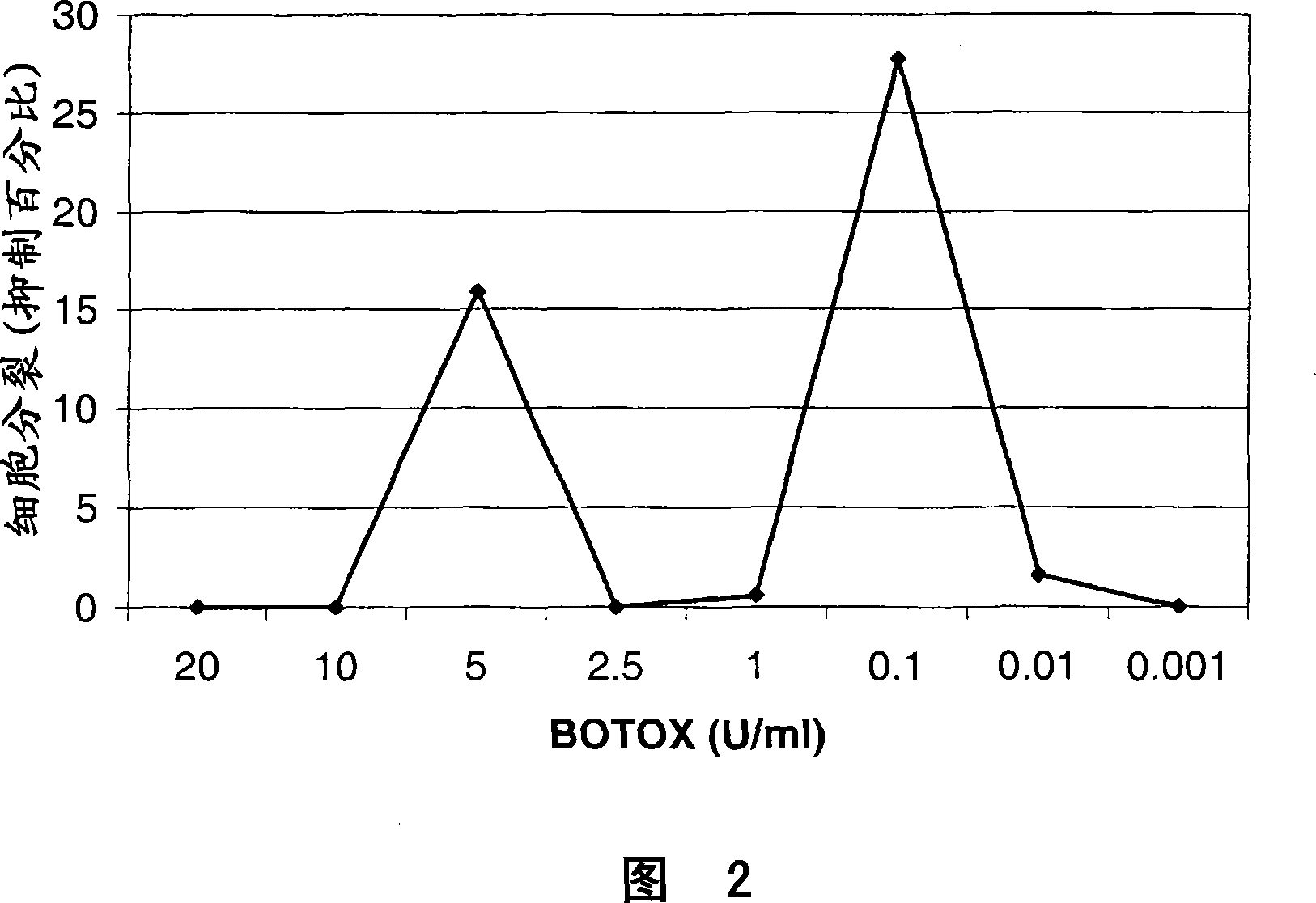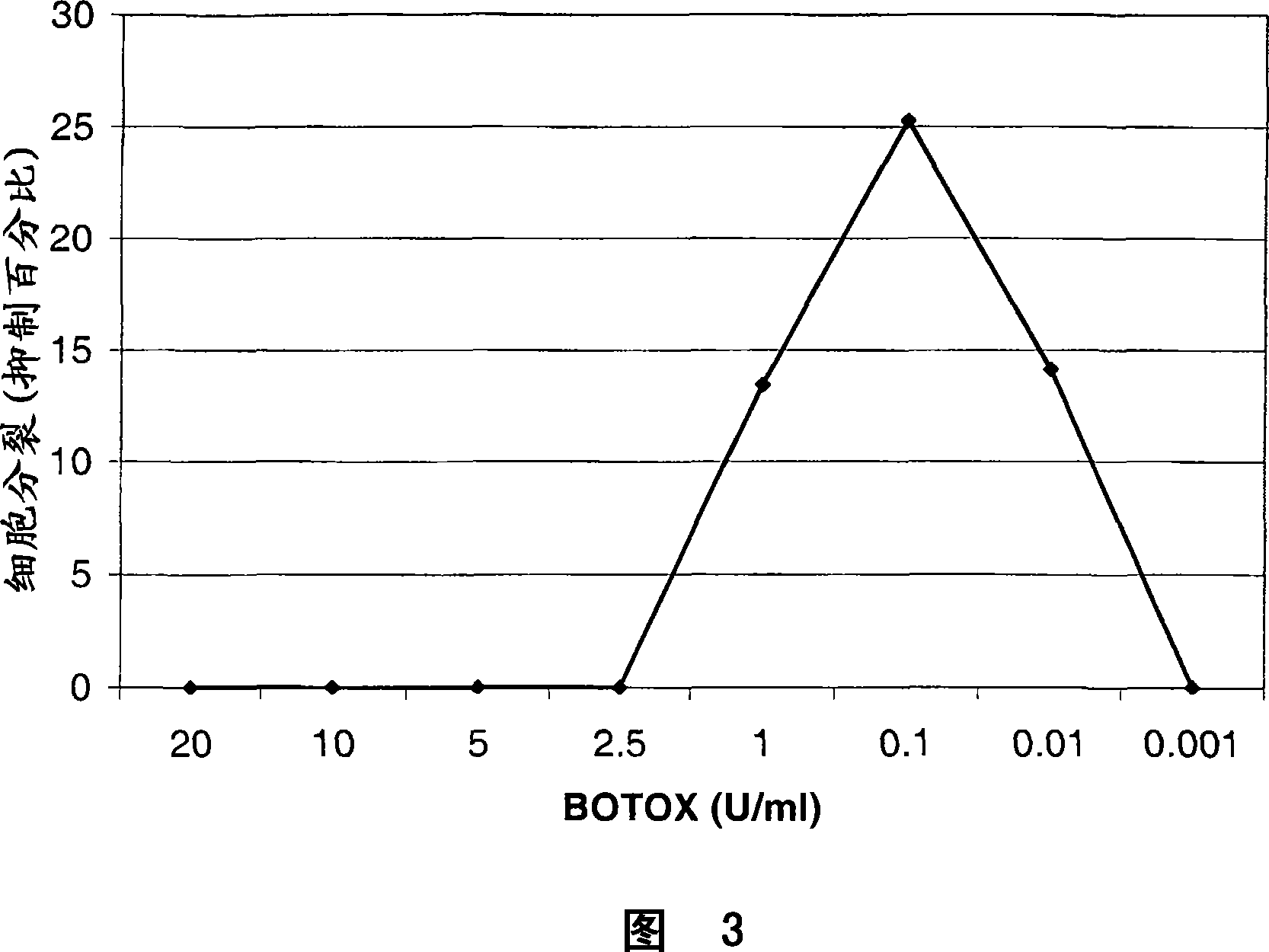Methods for treating cancers
A cancer, breast cancer technology, applied in the prevention of atypical tissue, the treatment of hyperplastic glandular cells and/or hypertonic glandular cells, the development of cysts and neoplasms or their degeneration or remission, which can solve the problems of high recurrence rate, multiple operations, etc.
- Summary
- Abstract
- Description
- Claims
- Application Information
AI Technical Summary
Problems solved by technology
Method used
Image
Examples
Embodiment 1
[0207] Use of botulinum toxin in the treatment of precancerous breast disease
[0208] 1. Treatment of cysts
[0209] A 46-year-old woman developed chronic cystic disease in her otherwise normal breast. Fibrocystic changes appear in the form of a mixture of multiple benign entities, the total size of the benign entities is 1.2 cm in diameter, containing hard fibro-fatty tissue areas and polycysts of different sizes. Ultrasound and imaging examinations revealed cyst formation and microcalcifications. Histological examination revealed the presence of apocrine atypical cells (including hyperplasia and tissue transformation), so it was determined that the patient was at risk of developing apocrine carcinoma or medullary carcinoma.
[0210] Fine needle aspiration (FNA) that can touch the breast has been used in cancer diagnosis since 1930 to detect the cytopathology of breast cells. Stereotactic fine-needle aspiration and fine-needle aspiration guided by ultrasound and m...
Embodiment 2
[0223] Treatment of hypertonic or hyperplastic tissue with botulinum toxin
[0224] Direct local administration of botulinum toxin to or near hypertonic or proliferative target tissues can be accomplished by several methods. As mentioned above, skin or subcutaneous target tissues such as breast tissue can be treated by direct injection or placement of toxin implants. Visceral locations such as visceral neuroblastoma are also easy to reach. For example, endoscopy for diagnostic and therapeutic purposes is well known.
[0225] (1) Pancreatic endoscopy techniques for therapeutic purposes include pancreatic sphincterectomy, stricture dilation, stenting, pseudocyst drainage and endoscopic retrograde cholangiopancreatography (endoscopic retrograde cholangiopancreatography) , ERCP), which provides the possibility of visualization and treatment of the pancreatic biliary system. The endoscope used for pancreatic treatment can be modified to make it possible to inject neurotoxins s...
Embodiment 3
[0235]Use botulinum toxin to treat different cancers
[0236] introduction
[0237] Experiments are conducted to determine the anti-cancer effects of botulinum toxin on various cancers. Use Oncotech EDR Assay (Oncotech, Inc., Tustin, California) was tested. This analysis can be used to evaluate the anti-cancer activity of the agent, which is determined by the measurable activity (if any) of the agent in preventing the division and growth of cancer cells. Therefore, Oncotech EDR Assay is an in vitro drug resistance analysis used to measure the in vitro resistance of various cancer cell lines to the investigated agent.
[0238] Oncotech EDR Assay uses cancer cells and exposes the cancer cells to a cancer chemotherapeutic agent (ie, a drug) with specific potential in the culture medium. During the incubation period, radioactive thymidine is added. Tritium-labeled thymidine easily penetrates the cancer cell membrane and is converted into thymidine kinase and nucleoside diphospha...
PUM
| Property | Measurement | Unit |
|---|---|---|
| diameter | aaaaa | aaaaa |
| diameter | aaaaa | aaaaa |
| diameter | aaaaa | aaaaa |
Abstract
Description
Claims
Application Information
 Login to View More
Login to View More - R&D Engineer
- R&D Manager
- IP Professional
- Industry Leading Data Capabilities
- Powerful AI technology
- Patent DNA Extraction
Browse by: Latest US Patents, China's latest patents, Technical Efficacy Thesaurus, Application Domain, Technology Topic, Popular Technical Reports.
© 2024 PatSnap. All rights reserved.Legal|Privacy policy|Modern Slavery Act Transparency Statement|Sitemap|About US| Contact US: help@patsnap.com










